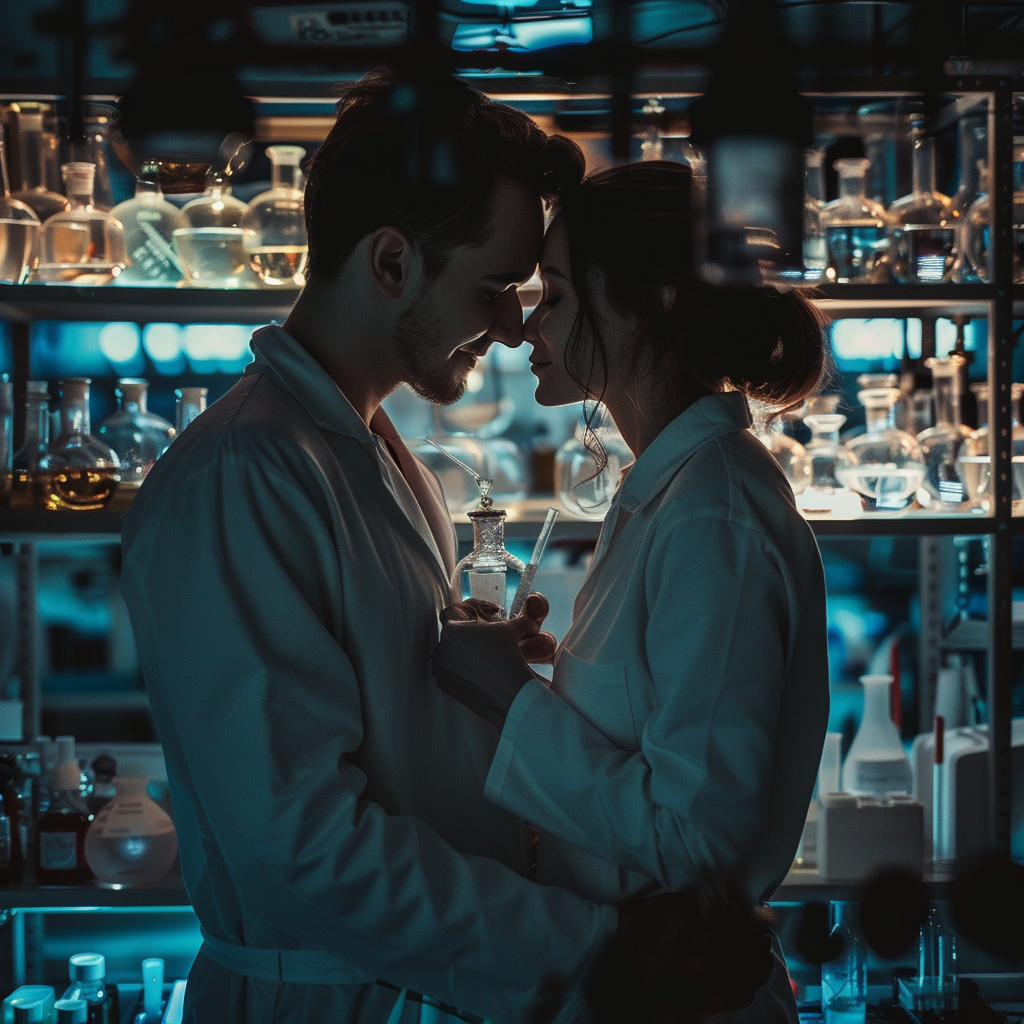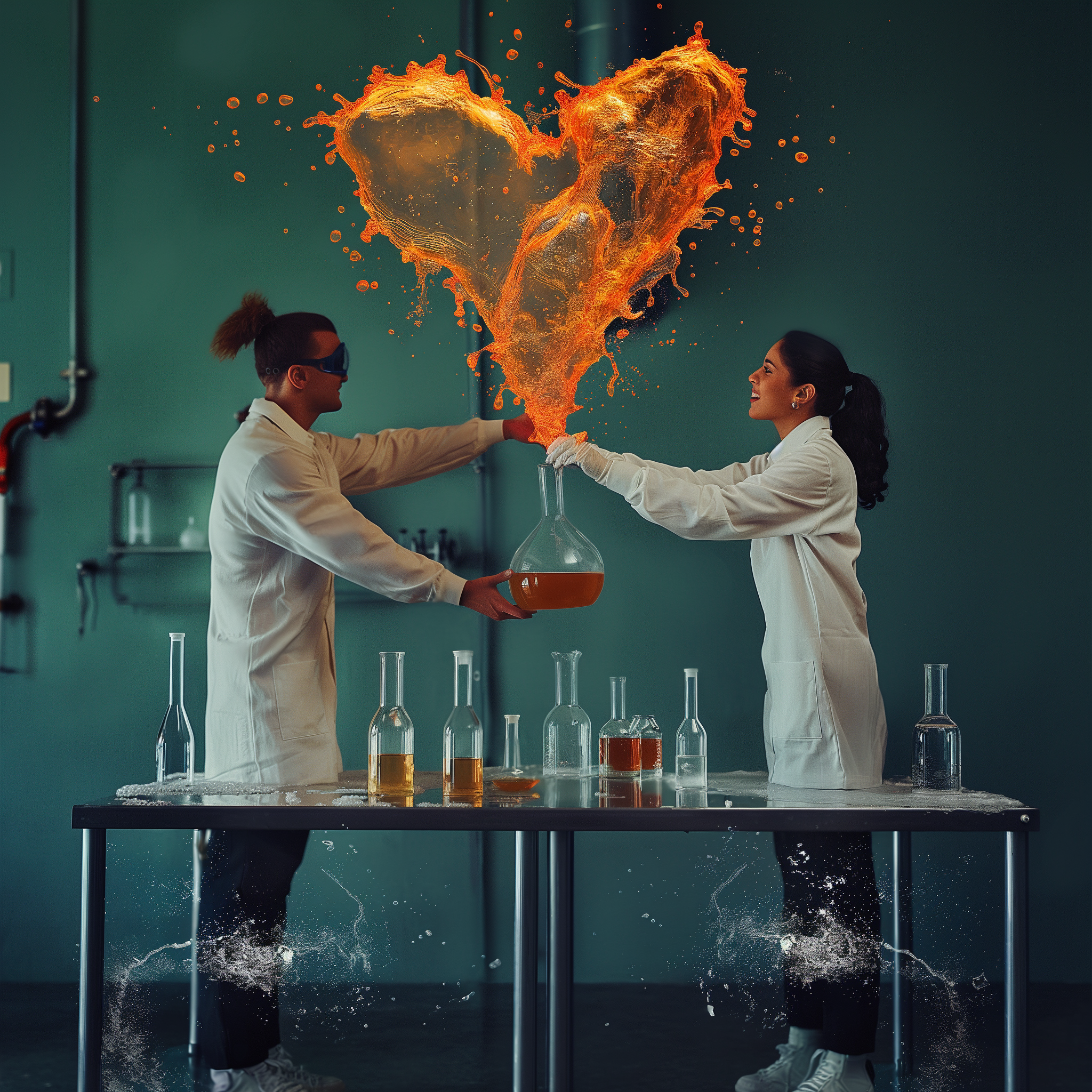Love has inspired poets, philosophers, and scientists for centuries. It’s an emotion that transcends cultures, time, and even species. But what exactly happens to our brains when we fall in love? The experience of falling in love can feel magical, but there’s a fascinating array of chemical and neurological processes behind those feelings. In this article, we’ll explore the science of love, diving into the chemistry involved, the different stages of love, and how these processes affect our brains and bodies.
The Chemistry of Love

At the heart of romantic love is a complex interplay of neurotransmitters and hormones that create the euphoric and sometimes obsessive feelings associated with falling in love. Three main chemicals play crucial roles: dopamine, oxytocin, and serotonin.
Dopamine is often referred to as the “pleasure chemical” because it plays a significant role in reward-motivated behavior. When you fall in love, your brain releases large amounts of dopamine, creating feelings of euphoria, increased energy, and a desire to spend as much time as possible with your partner. This surge in dopamine can make the early stages of a relationship feel exhilarating and all-consuming.
Oxytocin, often called the “love hormone,” is crucial for bonding and attachment. It’s released during physical touch, such as hugging, kissing, and sexual intimacy, strengthening the emotional connection between partners. Oxytocin also promotes feelings of trust and empathy, which are essential for building a lasting relationship.
Serotonin levels tend to decrease when you’re in love, which may explain why new lovers often exhibit obsessive behaviors, constantly thinking about their partner and feeling anxious when they’re apart. This drop in serotonin levels is similar to what happens in obsessive-compulsive disorder, suggesting that love and obsession share some common neurological pathways.
Stages of Love
Love typically progresses through three stages: lust, attraction, and attachment. Each stage involves different hormones and brain activity, influencing how we feel and behave in a relationship.

- Lust: The first stage, lust, is driven by the sex hormones testosterone and estrogen. These hormones increase libido and create the desire for physical intimacy. Lust is essential for reproduction and encourages individuals to seek out potential partners.
- Attraction: The attraction stage is where the “honeymoon phase” of a relationship occurs. This stage involves the brain’s reward system and is characterized by intense feelings of excitement and infatuation. Dopamine, norepinephrine, and serotonin play significant roles during this stage. Norepinephrine, similar to adrenaline, increases heart rate and creates feelings of exhilaration. This stage is often marked by increased energy, decreased need for sleep and appetite, and an overwhelming focus on the object of affection.
- Attachment: As the relationship progresses, the attachment stage takes over. This stage is crucial for long-term relationships and involves feelings of deep emotional connection, safety, and stability. Oxytocin and vasopressin are the primary hormones involved in attachment. Oxytocin, released during physical intimacy, promotes bonding, while vasopressin is linked to behaviors that produce long-term, monogamous relationships. This stage fosters a sense of companionship and mutual support, essential for a lasting partnership.
Why We Fall in Love
From an evolutionary perspective, love plays a critical role in human survival. The desire to form romantic and parental bonds has deep evolutionary roots, promoting the continuation of our species.

- Reproduction: The primary evolutionary purpose of love is reproduction. Romantic love motivates individuals to pair up and reproduce, ensuring the survival of the species. The strong emotional bonds formed through love increase the likelihood of successful reproduction and raising offspring to maturity.
- Parental Investment: Love also promotes parental investment. When parents form strong emotional bonds with each other and their offspring, they are more likely to work together to provide care and protection for their children, increasing their chances of survival.
- Social Bonds: Beyond reproduction, love fosters social bonds that contribute to the stability and cohesion of human communities. Strong romantic and familial bonds create networks of support that enhance individuals’ chances of survival and well-being.

The Role of Physical Attraction

Physical attraction is a key component of romantic love. When we find someone physically attractive, our brains respond with a surge of dopamine, creating feelings of pleasure and desire. Several factors influence physical attraction, including symmetry, health, and certain social cues.
- Symmetry: Symmetrical facial features and body proportions are often perceived as more attractive. Symmetry is associated with genetic health and fertility, making symmetrical individuals more appealing as potential mates.
- Health: Physical indicators of health, such as clear skin, bright eyes, and a fit physique, are also attractive. These signs suggest that an individual has good genes and is likely to produce healthy offspring.
- Social Cues: Social factors, such as confidence, status, and behavior, can significantly influence physical attraction. Confidence, in particular, is highly attractive as it signals strength and competence.
Love and Emotional Health
Being in love has profound effects on mental and emotional health. Studies have shown that individuals in loving relationships experience lower levels of stress, anxiety, and depression. Love and affection trigger the release of endorphins and oxytocin, which promote feelings of happiness and well-being.
- Stress Reduction: Physical touch, such as hugging and holding hands, can reduce cortisol levels, lowering stress. The emotional support provided by a loving partner also helps individuals cope with life’s challenges more effectively.
- Improved Mood: The release of endorphins and oxytocin during positive interactions with a partner boosts mood and creates a sense of emotional stability. This effect can be particularly beneficial during difficult times, providing comfort and reassurance.
- Increased Longevity: Research suggests that individuals in long-term, loving relationships tend to live longer and enjoy better overall health. The emotional and practical support provided by a partner can encourage healthier lifestyle choices and improve physical health.
Maintaining Love Over Time
Building and maintaining a loving relationship requires effort, mutual respect, and effective communication. Here are some strategies for keeping the spark alive and nurturing a long-lasting bond.
- Communication: Open and honest communication is crucial for resolving conflicts and understanding each other’s needs. Regularly discussing feelings, goals, and concerns helps build trust and intimacy.
- Quality Time: Spending quality time together strengthens the emotional connection between partners. Whether it’s through shared activities, date nights, or simply enjoying each other’s company, prioritizing time together is essential.
- Physical Intimacy: Maintaining physical intimacy is vital for emotional bonding. Regular touch, affection, and sexual intimacy release oxytocin and promote feelings of closeness.
- Appreciation and Gratitude: Expressing appreciation and gratitude for your partner fosters positive feelings and reinforces the bond. Acknowledging each other’s efforts and qualities can help maintain a positive and supportive relationship.
Conclusion
The science of love reveals the intricate and fascinating processes that occur in our brains and bodies when we fall in love. Understanding these processes can help us appreciate the complexity of love and relationships, and provide insights into building and maintaining healthy, fulfilling connections. Whether you’re experiencing the thrill of new love or nurturing a long-term relationship, remember that love is a journey of discovery, growth, and mutual support.
If you enjoyed this article and want to learn more about the science of love, dating tips, and relationship advice, make sure to subscribe to Blue Jones one four three. Until next time, keep spreading love and positivity!
Warm regards, Blue Jones 1-4-3


